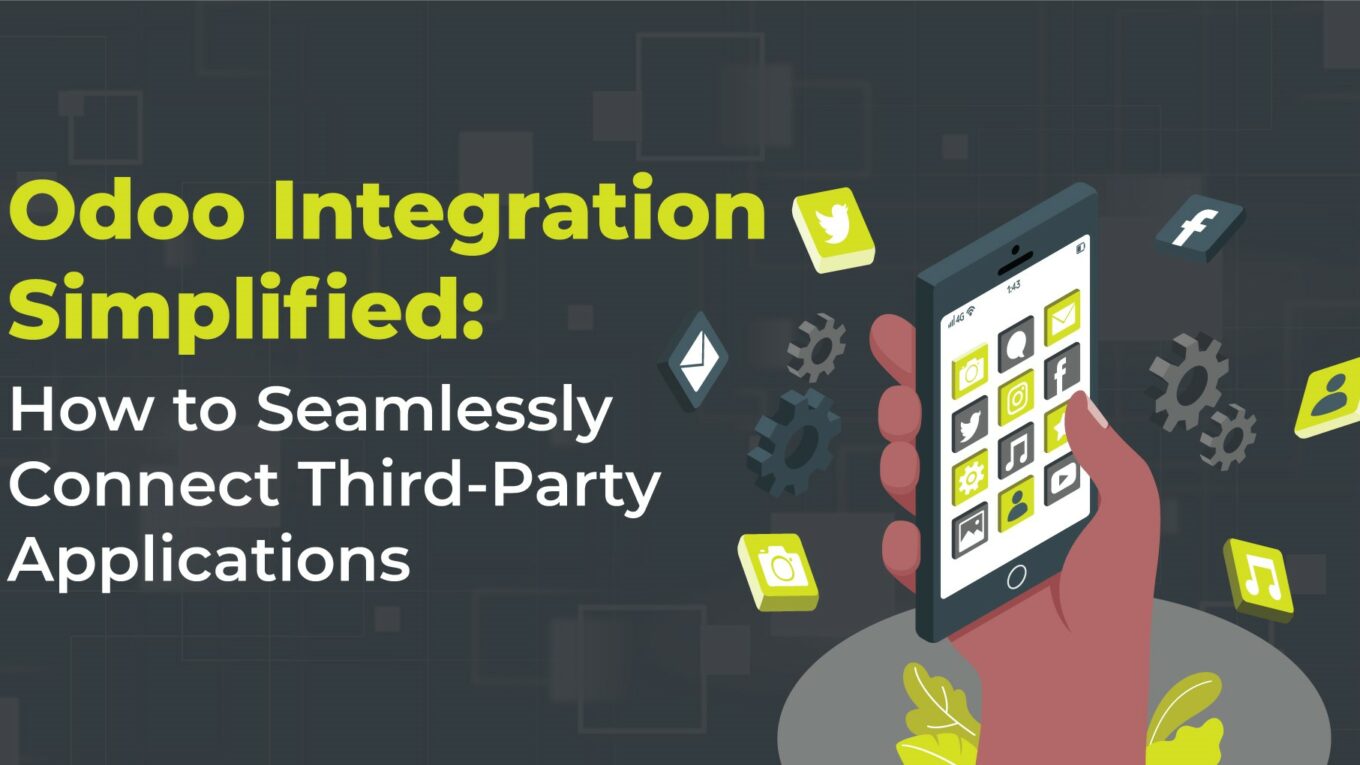Odoo Integration Simplified: How to Seamlessly Connect Third-Party Applications
In today’s fast-paced business environment, integrating third-party applications with your ERP system is crucial for maximizing efficiency, streamlining processes, and ensuring a smooth flow of information. Odoo stands out for its adaptability and comprehensive features, offering a variety of methods to integrate seamlessly with external applications.
This guide will walk you through the essential steps and best practices for achieving successful Odoo integration, providing you with practical insights and actionable strategies to enhance your system’s functionality and drive business success.
Identifying Integration Needs
The first step in Odoo integration is understanding your specific business needs and how third-party applications can address them. Common integration scenarios include syncing customer data and interactions with CRM systems, managing online sales and inventory through e-commerce platforms, processing payments and transactions via payment gateways, automating shipping and logistics with shipping providers, and integrating financial data for streamlined accounting with accounting software. Identifying these needs helps in selecting the right integration approach and tools.
Exploring Integration Methods
When it comes to integrating third-party applications with Odoo, you have a few different options, each suited to various needs. If you’re looking for an easy solution, the Odoo App Store is a great place to start. You’ll find pre-built modules for many popular apps that can save you time and effort. Just search for the Odoo integration you need, follow the installation instructions, and tweak the settings to fit your requirements.
For applications that don’t have ready-made modules, APIs are a powerful tool. Begin by checking out the API documentation of the third-party service to get familiar with its endpoints, authentication methods, and data formats. Once you have the API credentials, you can use Odoo’s external API features to write scripts that handle the data exchange. Don’t skip the testing phase—it’s crucial for making sure everything works smoothly and catching any errors.
Another handy method is using webhooks for real-time updates. Decide which events in the third-party app should trigger a webhook, set up the endpoints in Odoo to catch the data, and test everything to make sure it’s working as expected.
If your integration needs are more complex or unique, you might need custom development. This means outlining your specific requirements, creating custom connectors or middleware, and thoroughly testing the solution before going live. This approach ensures you get a tailored solution that perfectly fits your business needs
Implementing Odoo Integration: A Step-by-Step Guide
Using Odoo Apps and Modules is pretty straightforward. Start by visiting the Odoo App Store and searching for the integration modules that fit your needs. Once you find one that works for you, install it and make sure it’s compatible with your version of Odoo. After installation, follow the setup instructions provided to link the module with your third-party application. To wrap things up, test it out by running some transactions and data exchanges to confirm everything is working smoothly.
Leveraging APIs involves a bit more technical know-how. First, dive into the API documentation of the third-party service to understand how it interacts with your system. Register your application with them to get your API credentials. Next, write integration scripts using Odoo’s API capabilities to handle data exchanges. Don’t forget to thoroughly test this setup to make sure data transfers accurately and handle any potential errors or issues that come up.
Setting up Webhooks is another effective method for real-time data updates. Identify the events in the third-party application that should trigger a webhook and set up the webhook endpoints in Odoo to receive and process this data. Test it out to ensure the webhooks fire correctly and that the data is processed accurately in Odoo.
For more unique or complex needs, custom development might be the way to go. Clearly outline your specific integration requirements, then build custom connectors or middleware. Make sure to rigorously test your custom solution to ensure it’s reliable and performs well before deploying it in a live environment. Keep an eye on its performance after deployment and be ready to tackle any issues that arise.
Best Practices for a Smooth Odoo Integration
To make sure your Odoo integration goes off without a hitch, keep these best practices in mind:
1. Ensure Data Consistency: Make sure that your data remains accurate and consistent across all systems. This helps avoid any mismatches and ensures that everything runs smoothly.
2. Handle Errors Effectively: Set up strong error-handling procedures to catch and manage any integration issues. This keeps your system stable and helps you quickly address any problems that come up.
3. Protect Your Data: Safeguard your data by using encryption and strict access controls. This protects sensitive information during the integration process and keeps your data secure.
4. Document Everything: Keep detailed records of your integration processes and configurations. This documentation will be invaluable for troubleshooting, making updates, and planning future improvements.
By following these practices, you’ll set yourself up for a successful Odoo integration and keep things running smoothly.
Conclusion
Integrating third-party applications with Odoo can really boost your ERP system’s performance and make your business processes more efficient. Whether you’re using ready-made modules, APIs, webhooks, or custom solutions, the key to successful Odoo integration is careful planning and execution. By following the steps in this guide, you’ll be set up to effectively connect Odoo with the tools and services that best fit your business needs, ensuring you get the most out of your ERP system and its integration capabilities.



One thought on “Odoo Integration Simplified: How to Seamlessly Connect Third-Party Applications”